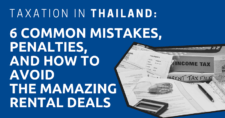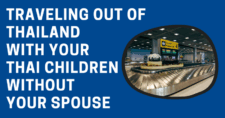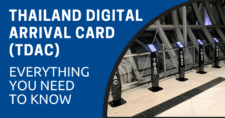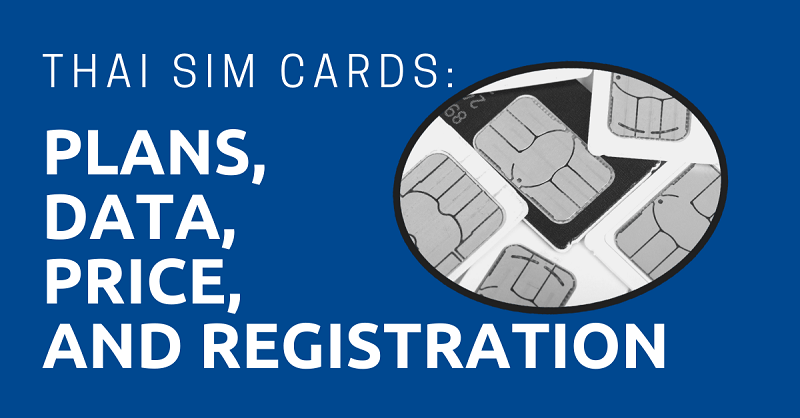
When you come to Thailand, one of the first things you are going to do after arriving is to get a sim card.
Fortunately, there are many ways to get a sim card. You can buy it online before arriving in Thailand. You can buy it at the airport. If you are already inside the city, you can get it at a convenience store that’s available throughout the country.
As a plus, sim card in Thailand is also affordable.
In this article, I’m going to show you everything about buying a sim card in Thailand, both for tourists and expats who plan to live here long-term. I’m going to also tell you about eSIM, which is also available in Thailand as well.
Let’s take a look.
"*" indicates required fields
Disclaimer: This article may include links to products or services offered by ExpatDen's partners, which give us commissions when you click on them. Although this may influence how they appear in the text, we only recommend solutions that we would use in your situation. Read more in our Advertising Disclosure.
Contents
(And How It’s Costing Them)
Most expats throw money away, get lost in red tape, and miss the local hacks that make life easier and cheaper. ExpatDen Premium gives you the secrets seasoned expats use to save, earn, and thrive beyond the basics, saving you thousands and opening doors you didn’t even know existed.
Here’s what’s inside:
- Housing Hacks: Slash your rent by 40% or more - because the locals are laughing at what you’re paying.
- Banking Mastery: Stop wasting on fees and get top exchange rates. Why give your money away?
- Healthcare for Local Prices: Quality treatment without the expat price tag.
- Visa and Legal Shortcuts: No more bureaucratic nightmares. Get the visa and residency secrets that others pay their lawyer dearly for.
- Deep Discounts: Find the savings locals rely on for groceries, dining, and more.
If you’re serious about making Thailand work for you, join ExpatDen Premium and make Thailand work for you.
Do You Need a Local Sim Card?
Before you head out to buy one, there’s something even easier – an eSIM. This is what I always used when traveling abroad.
Most newer smartphones, including iPhones from the XR (2018) onward and most Android models, support eSIMs – digital SIM cards you can set up right away.
With a data eSIM, you can get online as soon as you land, without the hassle of queuing for a local SIM. While data eSIMs don’t let you make regular phone calls, apps like LINE, WhatsApp, FaceTime, and Skype (which can even call local numbers) might cover you just fine. And the best part? You can get one instantly and for free, right here.
Anyway, back to local SIMs.
Requirements
There are two main requirements for buying a sim card in Thailand: a passport and an unlocked phone.
Passport
It’s good to know that you’ll have to provide your passport when buying a Thai SIM card. The Office of The National Broadcasting and Telecommunications Commission now requires every tourist to register their SIM card.
To do this, the SIM provider will take a photo of your passport and upload it to the NBTC database through a phone app.
If you don’t want to provide your passport, there are three alternatives:
- You can have your Thai spouse or relative purchase a tourist SIM card for you, but they will need to present their national ID card.
- You can buy an eSIM from international providers. More on this later.
- You can rent a pocket wifi and mobile hotspot from klook. You can conveniently book the device for the number of days that you would like to use it, pick it up at the airport upon arrival, and connect all your devices.
Unlocked Phone
If your phone is locked by your carrier, you can have your carrier unlock it for you before you leave.
If you are already in Thailand, there are three ways you can unlock your phone:
- You can unlock it yourself by following online manuals on your carrier’s website.
- You can go to one of the phone shops in any shopping mall in Thailand, and they can do it for you for a small fee. In Bangkok, MBK is a popular location.
- You can look into online services such as Mobile Unlock and Doctor SIM.
If none of these methods work, you can opt to rent a pocket WiFi instead.
Internet Speed and Stability
Thailand is a popular destination among digital nomads for many reasons, and the great internet speed is one of them.
Mobile internet speed in Thailand is quite fast, thanks to the wide 5G coverage throughout the country.
Here’s the average speed I recorded in Bangkok as of January 2025:
- Download speed: 95.0 Mbps
- Upload speed: 35.8 Mbps
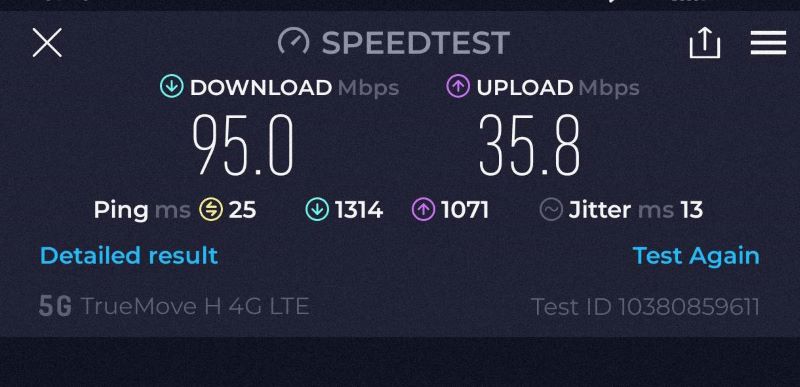
This speed is more than sufficient for your everyday internet activities. You can use Google Maps, search for reviews on social media, make video calls, and more without any issues.
Of course, if you travel outside city areas, the internet speed may not be as fast. You may connect to 4G or 4G+ instead. However, it’s still adequate.
Coverage Area
Unless you venture into very remote areas, such as the top of a mountain or deep into a forest, you should have internet access almost everywhere you go.
eSIM vs. Physical SIMs
When it comes to SIM cards in Thailand, you have two options: an eSIM or a physical SIM. Even if you buy a SIM card from a local service provider in Thailand, you also have the option to choose an eSIM over a physical SIM card.
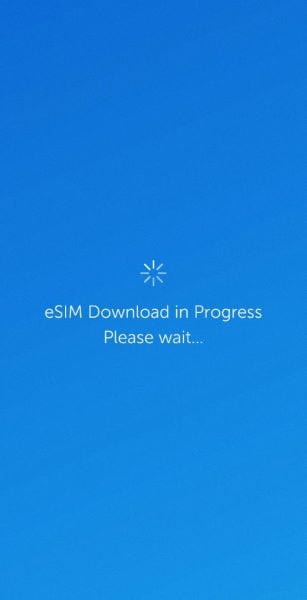
In my case, since my phone support an eSIM, I always use it. It’s much more convenient and can be more secure as well.
Read our article about eSIM in Thailand to find out more.
Service Providers
Because of eSIM technology, you have two main options when it comes to buying a SIM card: from a local service provider or from international service providers.
Local Providers
Previously, I always bought a sim card from a local provider since it’s very easy to do and affordable too. After landing at the Thailand airport, I just quickly stopped at the phone counter and bought it there. They can assist in setting up the SIM card, whether it’s a physical SIM or an eSIM, on your phone.
There are three main service providers in Thailand when it comes to SIM cards:
- AIS
- True
- Dtac
Based on my experience, I haven’t noticed any significant differences between these providers. The SIM card market in Thailand is highly competitive, and all providers offer similar plans at similar prices with comparable services. The coverage area and speed also don’t vary much between them.
So, you can use a SIM card from any provider that is most convenient for you.
If you want more details about each provider, read on.
AIS

AIS is well-known for its speedy internet service and strong signals. AIS has the widest 5G coverage throughout the city. Therefore, if you want to get 5G coverage in most parts of the country, AIS is recommended.
However, AIS plans can be slightly more expensive than other providers.
AIS has a weekly package called VIU Premium. This package lets you watch your favorite Korean drama tv series, if that’s your thing.
TrueMove
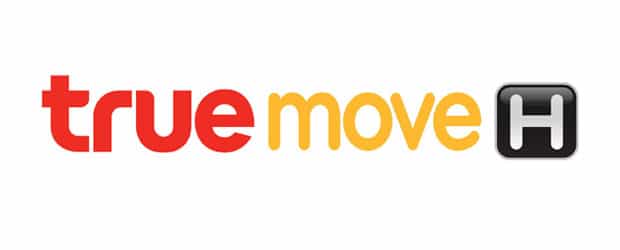
TrueMove tends to be slightly cheaper than AIS, but its 5G coverage area isn’t as extensive.
What makes TrueMove stand out from other providers is its bundled packages.
With these bundles you can get tv, internet, and cell phone service all for one price. And packages differ according to your demands. If you favor cell service over tv, you can allocate your data for better cell service. If you favor tv over cell service, you can allocate most of your data there. And likewise with the internet.
DTAC
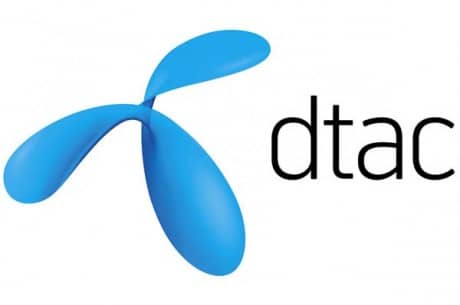
DTAC stands out among other cell phone service providers in Thailand due to its unlimited internet packages, which tend to be slightly cheaper than those offered by other providers.
DTAC also has Jai Dee service for prepaid users. If you’re a prepaid user and you’ve run out of minutes, you can get emergency access to calls and internet on loan.
Please note that TrueMove officially merged with DTAC in 2022. While they still have different branding, they are now managed by the same company.
International Providers
If your phone supports eSIM, you can buy an eSIM from international service providers.
There are several major benefits of using eSIMs from these providers:
- They have apps that help you install the eSIM directly on your phone.
- You can easily manage your plan through the app.
- You can install an eSIM before arriving in Thailand and connect to the internet immediately after landing.
- You don’t need to hand over your passport to a SIM card seller.
- English support is available.
- Prices can even be cheaper than a local SIM.
Drawbacks include:
- You need to install the eSIM yourself.
- You need an internet connection from another source (like Wi-Fi) during installation.
- The plans typically do not include local or international calls.
While there are many options, I recommend Airalo and GigSky.
Airalo

Airalo is an eSIM reseller, offering eSIMs from DTAC on their website. It is often the cheapest option available, as you can get unlimited internet at a lower price than buying directly from DTAC.
There are two main plans available:
- 10 days of unlimited internet for US$9.9 (~THB330).
- 15 days of unlimited internet for US$19.95 (~THB667).
Airalo is what I normally used when travling to Thailand now. The price can be even cheaper than buying a local sim in Thailand. And I can set-it up before the flight, which is very convenient.
You can use our coupon code “EXPATDEN” to get an additional discount, making this the cheapest deal for unlimited internet in Thailand.
GigSky

GigSky is a virtual network operator that provides its own eSIMs by partnering with local service providers in Thailand, offering unique advantages.
I had a chance to test out GigSky before. Here’s what I like about them.
- Excellent speed and coverage because they can automatically connect you to the strongest signal in the area.
- Since they are a network operator, they can help diagnose and fix any issues with your internet connection. I once had a connection issue. I contacted their support and they can fix my issue within a few minutes.
- You can easily extend your plan through their app
- Options for worldwide coverage
However, they are not the cheapest option. Their 30-day plan, which includes 10GB of internet, costs US$34.99 (~THB1,200).
A good deal is their Asia-Pacific plan, which provides coverage throughout the Asia-Pacific region for US$37.99 (~THB1,270) for 30 days.
You can read our GigSky review to find out more.
Plans and Prices
There are several plans and prices available for Thailand sim cards. Each comes with different prices and datas you get.
Tourist Sim Cards
If you buy a sim card at the airport, this is what you usually get.
Tourist sim cards are exclusive plans for tourists in Thailand that often include unlimited internet and local calls. Most, if not all, tourist plans have a maximum validity of 30 days. If you’re staying in Thailand for longer than that, you can continue to top up your plan to extend both the days and data.
Here’s a list of tourist SIM cards from major providers. Unless stated otherwise, the plans include unlimited internet.
| Providers | 8 Days | 10 Days | 15 Days | 30 Days |
| Airalo | – | US$9.9 (~THB330) | US$19.95 (THB667) | US$39.9 (~THB1,337)* |
| AIS | THB399 (25GB) | N/A | THB599 (35GB) | THB1,699 |
| TrueMove | THB449 | N/A | THB699 | THB1,199 |
| Dtac | THB449 | N/A | THB699 | THB1,199 |
* after you purchase the 15-day plan twice
As shown in the table above, Airalo offers the best deal. You can even get an additional discount by using our coupon code ExpatDen.
Alternatively, if you plan to travel to Thailand and nearby countries such as Cambodia, Vietnam, Malaysia, Singapore, and more within the same trip, you can check out GigSky.
Tourist SIM cards are mainly available at international airports. In most cases, you can purchase a tourist SIM card at international airports or convenience stores in popular tourist destinations across Thailand.
If it’s an eSIM, you can conveniently purchase it online.
Long-Term SIM Cards
You can get a long-term SIM card from any of the major providers, including AIS, DTAC, or TrueMove. Plans for long-term SIM cards are often cheaper than tourist SIM cards but may not include unlimited internet.
For example, a 30-day plan may cost around THB200 per month but may only come with 10GB of internet data.
There are two main types of long-term SIM card plans available to expats in Thailand:
- Prepaid plans
- Postpaid plans
Prepaid Plans
When I first moved to Thailand, I bought a sim card from a convenient store and use a prepaid plan. It worked similar to other countries. You top up your sim card, choose a plan, and pay in advance. It’s a perfect option if you want to control how much your phone bill costs every month.
As the name says, you pay for prepaid packages before you use the allotted credit. So if you top up your phone with 50 baht, you get 50 baht worth of credit.
Once you use all the credit, you’ll need to top up your SIM if you need to use your phone. But most service providers allow for emergency calls.
To get a prepaid SIM card in Thailand, there are typically three steps involved:
- You need to initially buy a SIM card at convenience stores or service provider stores for around THB49, which gives you limited calls and internet for a week.
- After that, you need to purchase additional packages (usually renewed automatically every month) that last between 7 to 30 days. There are several types of packages available in Thailand, including:
- Internet-only packages that provide a specific amount of data, such as 10GB per month, costing a few hundred THB per month.
- Unlimited packages that offer unlimited internet and calls, typically costing around THB1,000 per month.
- Internet and call packages that give you a set amount of internet data and call time per month.
- Call-only packages for those who primarily need voice services.
- You’ll need to keep topping up to ensure you have enough balance for your selected package.
You can always change the package once you buy the SIM.
Topping Up Data
It’s easy to top up data nowadays. I always use mobile banking to top up data. All mobile banking apps in Thailand have a top-up menu where you can easily add credit to your SIM card, starting with as little as 20 THB.
Each top-up typically extends your plan by 30 more days.

Alternatively, you can top up at almost any 7–11 or Family Mart.
You can also download your provider’s application on your phone and top up your number through the app.
Another option is to visit your SIM card provider’s store directly for assistance.
Checking Balances
To check your balance, you can either download your service providers app on your phone and check it there, or you can enter the following number for each provider:
- AIS: *121#
- DTAC: *101#
- TrueMove: *123#
Postpaid Plans
I later switched to postpaid plans once I decided to stay in Thailand permanently. Here’s why:
- It’s usually the cheapest option.
- You can select your package right away and possibly receive a discount on a one-year contract, along with a phone.
- You can purchase a bundle package that includes mobile internet, home internet, and a TV package for just THB600 per month.
- You can set up automatic payments through your credit card or pay online via mobile banking.
However, there are some disadvantages to postpaid plans:
- They typically come with a minimum one-year contract.
- Canceling can be a hassle, as you must visit a service provider shop in person.
- If you exceed your allotted usage, you’ll need to pay additional fees.
Requirements
If you want a postpaid plan in Thailand, you’ll need to provide a rental contract. Some service provider shops may also ask for a work visa, work permit, and your passport.
In my case, my wife just did it for me. She only needed to present her Thai national ID card and my passport.
Checking Balance
Checking the balance for postpaid plans is easy. You can simply download your service provider’s app and check it there.
Switching From Prepaid to Postpaid
If at any time you want to switch from a prepaid package to a postpaid package, as long as you meet the requirements, you can do so.
Simply bring your ID or passport with any relevant visas and a rental contract to a service provider’s shop and speak to the staff.
Where to Buy a Thai SIM Card?
Whether you’re in Thailand or at home, there are many ways you can buy sim cards for Thailand.
Online
If you want to buy a SIM card online, it’s most likely going to be an eSIM. You can purchase it from either local or international providers. However, in our opinion, buying from an international provider like Airalo is much more convenient.
It’s easier because you can simply download the app and purchase the eSIM directly from there.
Airports
Your next option is to buy a SIM card as soon as you land in Thailand. AIS, DTAC, and TrueMove have kiosks throughout international airports in Thailand—just look for their logos.
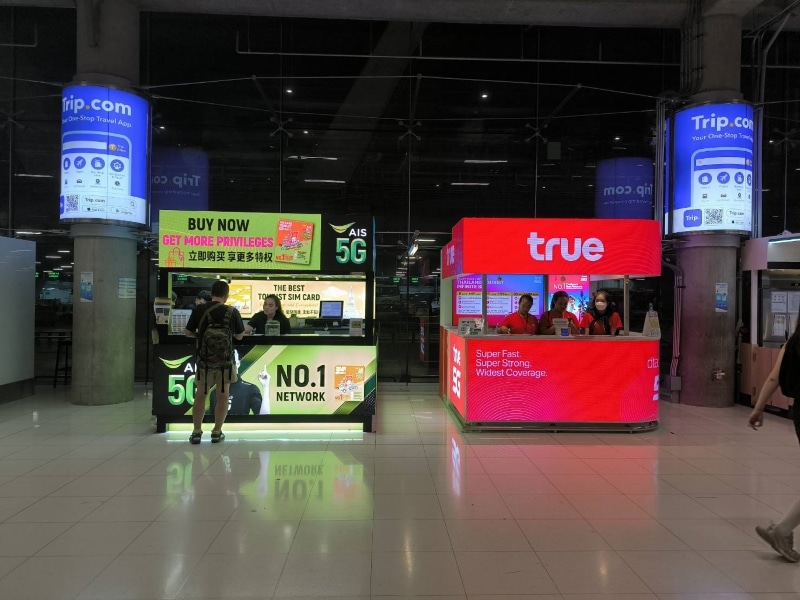
Please note that only tourist plans are available at these locations.
Service Providers
If you’re in Thailand and wish to go directly to the cell phone service provider’s shop, you can do that as well. All of the service providers mentioned in this article have shops in every major mall in Thailand.
Where you’ll find TrueMove, you’re likely to find AIS and DTAC. And vice-versa.
Convenient Stores
If you’ve already left the airport and ventured into Thailand, you can still get a SIM card. Most 7–11’s and Family Marts sell SIM cards. And with over 10,000 combined locations and 24-7 access, it shouldn’t be a problem to find one.
Most Big-C’s and Tescos have kiosks where you can buy SIM cards from independent sellers.
Getting Help
If you need help with your Thai SIM card, here’s a list of ways to contact the carriers mentioned in this article.
AIS Contact Info
- Phone: +662–271–9000
- Call Center: 1175
- Line App: Line Messenger
- Facebook: AIS
- Twitter: @12Call_Fan
- Email: [email protected]
DTAC Contact Info
- Phone: +662–202–8686
- Call Center: 1678
- Facebook: DTAC
- Line App: Line Messenger
- Twitter: @dtac
- Email: [email protected]
TrueMove Contact Info
- Phone: +668–9100–1331
- Call Center: 1331
- Facebook: TrueMoveH
- Line App: Line Messenger
- Twitter: @truemoveh or @Mytruemove
- Contact Form: Contact Form
Switching Providers
Service providers hate losing customers, but what they love even more is gaining new ones. AIS, DTAC, and TrueMove all offer enticing promotions to encourage you to switch to their network.
I did it once and I got 50% off during the first 12 months after switching providers. What I did at that time is to visit a service provider’s shop with your passport and a rental contract.
Please note that it may take a few days for the switch to be complete. During this time, you may not be able to make calls or use the internet on your phone.
Additionally, this option is only available for postpaid plans.
Keeping Your Number Active
In case you want to travel abroad and keep your number active, there are many ways you can do it.
In case you are on the prepaid package, the easiest way is to change your promotion that gives you the longest amount of duration and keep topping up your phone regularly on a monthly basis using your mobile banking.
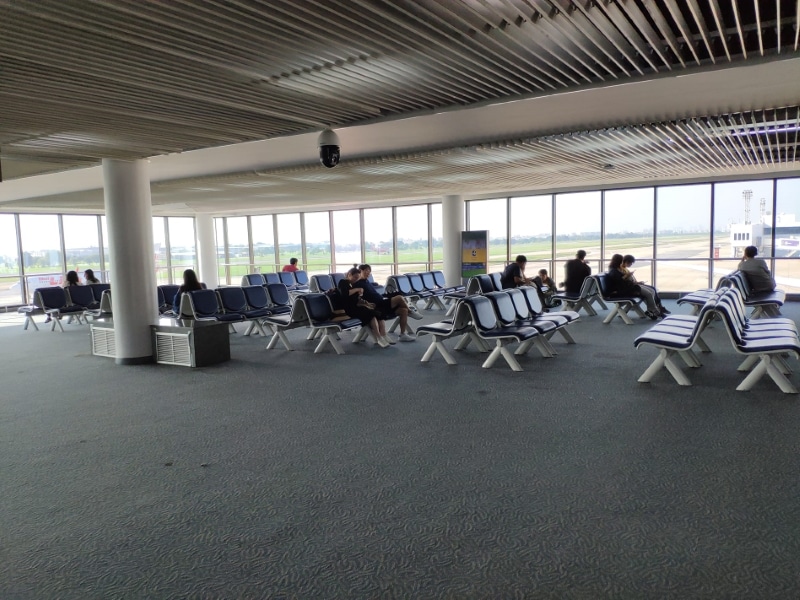
For example, you can top up for only 20 baht with DTAC and give you an additional 30 days.
In case it’s a postpaid package, you can change your package to the cheapest plan and have it paid every month automatically by your credit card.
Alternatively, it’s possible to contact your service provider and have them temporarily pause your plan for upto six months. However, the duration depends on your current package and how much you have been using their service.
Roaming
Since I have a Thai sim card on my phone, in many times, I use a roaming when traveling overseas. It’s easy to do and the plan can be more affordable than buying a local sim card. I recommend you to check it out.
In addition, by turning on roaming on my phone, I can receive text messages, which is important for an OTP, without having to pay anything. All you need to do is dial the following numbers while you’re in Thailand to activate roaming. After that, you need to turn on roaming in your phone settings.
Dtac
- Prepaid: *118#
- Postpaid *124*4#
If unsuccessful, contact its call center at 1678.
AIS
For AIS, you can call *125 or *125#1. If unsuccessful, contact its call center at 1175.
Please note that to use roaming, you need to have been with AIS for at least four months. Otherwise, you’ll have to go to the AIS shop with your passport to set it up.
TrueMove
- Postpaid: *112*1#
You need to have been with TrueMove for at least three months before you can use its roaming service. Otherwise, you need to visit a True Shop with your passport to set it up.
You can also activate roaming with a prepaid package. But you need to visit the True Shop yourself.
Roaming Packages
If you have a postpaid plan with AIS, DTAC, or TrueMove, and plan to travel outside of Thailand, it makes sense to get a roaming package.
Based on my own research, the price of roaming packages in Thailand is relatively cheap. And it also gives me a peace of mind knowing I won’t be hit with heavy roaming charges makes paying for a roaming package well worth it.
The table below is an example of how much roaming packages cost for an eight to ten day trip around Asia.
| Provider | Length | Allowance | Price |
| AIS Ready2Fly | 10 days | 8GB | THB429 |
| DTAC Go Travel | 7 days | 7GB | THB399 |
| TrueMove GO Travel | 7 days | 7GB | THB399 |
Because prices vary depending on travel destination, days, and usage needs, you can click on one of the links below to find out what your roaming package would cost.
What to be Careful Of
There are certain things you should be careful about when using roaming while outside of Thailand.
You should not pick up a call or make a phone call unless it’s part of your package. Otherwise, you should expect to pay between THB30 to THB70 per minute.
It also costs around THB20 to THB30 if you want to send a text message.
You should also set a data limit on your phone to make sure that you don’t go over your plan’s limit.
Alternative Options
If you do not want to buy a SIM card in Thailand, there are some other alternatives.
Roaming Packages
You can check out a roaming package from your home country’s SIM card provider. In most cases, while they have a roaming package available for Thailand, it is generally much more expensive than getting a Thai SIM card.
For example, a 15-day plan can cost you US$45, but getting a Thai SIM card can cost you just US$19.99.
Pocket WiFi
Nowadays, where the average person has at least two internet-connected devices, the most convenient choice would be to get a portable pocket WiFi.
With one pocket WiFi, you can connect multiple devices such as smartphones, tablets, or laptops.
It’s also a budget-friendly choice for those traveling in a group.
Renting a pocket WiFi costs around US$4 per day and comes with unlimited internet. In many cases, a pocket WiFi allows up to five devices to connect simultaneously.
The most convenient way to rent a pocket WiFi is through Klook. You can pick it up at Suvarnabhumi Airport or Phuket International Airport.
Free WiFi
It’s easy to find free WiFi in Thailand. Most airports, coffee shops, hotels, and restaurants offer it. As an expat in Thailand, I regularly work inside a coffee shop and enjoy a high-speed WiFi there.
Free WiFi, especially from hotels, is great if you want to upload multiple videos and pictures. However, it’s not convenient if you fully rely on it.
In my opinion, if you are already paying for a trip to Thailand, it’s much more convenient to get a SIM card that allows you to connect to the internet 24/7. The price is also affordable.
Next Steps
Even though requirements have changed over the years, getting a Thai SIM card is still an easy and straightforward process.
If you have an alternative way to get a Thai SIM card or would like to share your experiences with any of the methods mentioned above, leave a comment.




